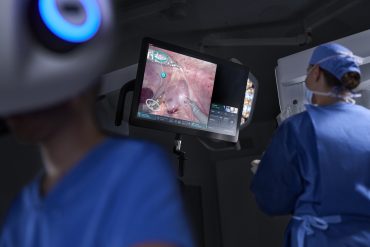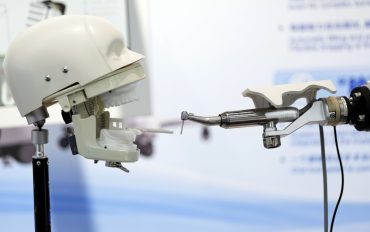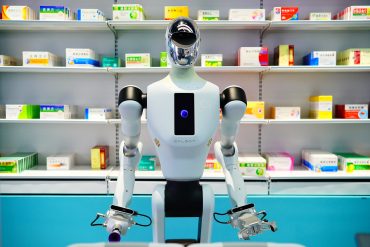
- Health Tech
- Medical Diagnostics
- Predictive Analytics
Artificial Intelligence Reshapes Healthcare Amid Worker Shortages
6 minute read

Artificial intelligence solutions transform healthcare operations as worker shortages and rising costs drive widespread technology adoption
Key Takeaways
- Value-based care (VBC) is undergoing a trillion-dollar shift by 2035, with the U.S. VBC services market valued at $4.01 trillion in 2024 and growing at a 7.4% CAGR through 2030, as providers assume financial risks for improved patient outcomes; models like Medicare Advantage are projected to reach 60% market share by 2030.
- AI enhances diagnostic accuracy in various studies (e.g., reducing errors in imaging), with over 40% (up to 52%) of health system executives reporting significant-to-moderate ROI from generative AI investments.
- Healthcare worker shortage of 10-11 million projected globally by 2030 (primarily in lower-middle income countries) drives aggressive AI adoption for automation of clinical documentation, diagnostic imaging, and workflow processes to reduce unit costs.
Introduction
The U.S. healthcare sector faces unprecedented disruption as artificial intelligence technologies converge with mounting cost pressures to reshape care delivery models. Healthcare expenses continue rising faster than inflation (e.g., 8.1% growth in 2024, with medical inflation at 3.3% vs. 3.0% economy-wide), forcing employers and government programs to seek innovative solutions that can simultaneously reduce costs and improve patient outcomes.
This transformation gains urgency as global populations age (e.g., people aged 60+ projected to rise from 1.1 billion in 2023 to 1.4 billion by 2030, doubling to 22% by 2050) and chronic diseases proliferate. The demand for efficient, affordable healthcare solutions creates opportunities for companies developing AI-powered diagnostic tools, automated clinical workflows, and value-based care models that tie provider compensation to patient results.

Key Developments
Four primary themes drive the current healthcare disruption according to Tech Icons recent analysis. AI and digital health lead the transformation, with technologies spanning clinical documentation, diagnostic imaging, machine learning, and predictive analytics aimed at addressing clinician shortages while reducing unit costs.
The tech partnership landscape shows clear priorities among healthcare leaders. Fifty-nine percent of U.S. healthcare leaders engage in partnerships with technology vendors to develop custom AI solutions, while 24% build capabilities in-house and 17% purchase off-the-shelf products.
Value-based care represents the second major theme, where healthcare providers assume financial risks in exchange for delivering improved patient outcomes. This model gains traction through pressures from Medicare Advantage, Medicaid programs, and employer health plans seeking cost containment.
Access expansion forms the third pillar, particularly in behavioral health, women’s healthcare, and kidney care. Companies like Spring Health, Maven Clinic, and Evergreen Nephrology develop specialized models to address unmet demand in these critical areas.
Market Impact
Investment activity reflects growing confidence in healthcare disruption opportunities. Recent initial public offerings from Hinge Health (priced at $32/share in May 2025, NYSE: HNGE) and Caris Life Sciences (priced at $21/share in June 2025, NASDAQ: CAI) demonstrate investor appetite for scalable healthcare technology solutions.
Acquisition activity accelerates alongside public market interest. CareBridge’s $2.7 billion sale to Elevance in 2024-2025 highlights valuations for companies operating in the intersection of technology and care delivery. The formation of Fuze Health through strategic mergers (Truepill + LetsGetChecked + Alto in 2024-2025) underscores the drive toward comprehensive service offerings.
The pharmacy sector experiences particular volatility as new players challenge established benefit managers. Companies like Ro and Capital Rx disrupt traditional dispensing networks with transparent models, while treatments such as GLP-1 medications redefine cost structures across the healthcare ecosystem (e.g., driving 8% cost rise in 2025, but offering potential long-term savings with adherence).

Strategic Insights
Automation technologies address the healthcare industry’s most pressing operational challenges. AI-powered diagnostic tools assist clinicians in identifying diseases earlier and more precisely than traditional methods, improving patient prognosis while reducing costs associated with misdiagnosis and unnecessary treatments.
Predictive analytics enable proactive population health management. Care teams analyze patterns in health data to identify individuals at high risk of hospitalization or complications, allowing for timely interventions that prevent expensive acute care episodes.
Robotics and automation reshape clinical workflows from multiple angles. Robotic-assisted surgeries increase precision while automating routine administrative tasks reduces burdens on overstretched healthcare staff and accelerates service delivery.
The “Binary Big Bang” trend represents the shift toward fully digitized, interconnected healthcare systems. This transformation enables more efficient data sharing and operational agility while supporting real-time integration of remote patient monitoring and wearable device data into care pathways.
Expert Opinions and Data
Governance frameworks gain priority as AI proliferation creates new risks. Eighty-two percent of healthcare organizations have or plan to implement frameworks addressing data security, legal, and ethical considerations surrounding generative AI deployment.
The World Health Organization projects a shortfall of 10-11 million healthcare workers by 2030, creating optimism about AI’s potential to fill critical gaps through automation. Smart surgical instruments powered by AI revolutionize intraoperative decision-making, while generative AI transforms diagnostic workflows.
Regulatory bodies adapt to address AI’s unique challenges. Both the U.S. FDA (e.g., January 2025 draft on AI device lifecycle) and European Union (AI Act updates) update frameworks to handle AI’s distinctive risks and lifecycle management requirements, though medical AI continues facing trust and adoption barriers.
Traditional healthcare providers face mounting pressure to integrate cost-reduction technologies. Profit margins remain tight while reimbursements stagnate, compelling organizations to adopt tools that demonstrate measurable efficiency gains and improved outcomes.

Conclusion
Healthcare stakeholders must navigate the balance between technological innovation and practical implementation challenges. The integration of AI technologies requires technical investment, organizational change, workforce upskilling, and process redesign to handle competitive pressure from technology giants entering healthcare markets.
The transformation promises substantial benefits through improved diagnostic accuracy, personalized treatment approaches, and optimized hospital operations. Success depends on effective collaboration between technology developers, healthcare providers, regulators, and patients to address ethical, technical, and operational barriers while realizing AI’s transformative potential in healthcare delivery.







